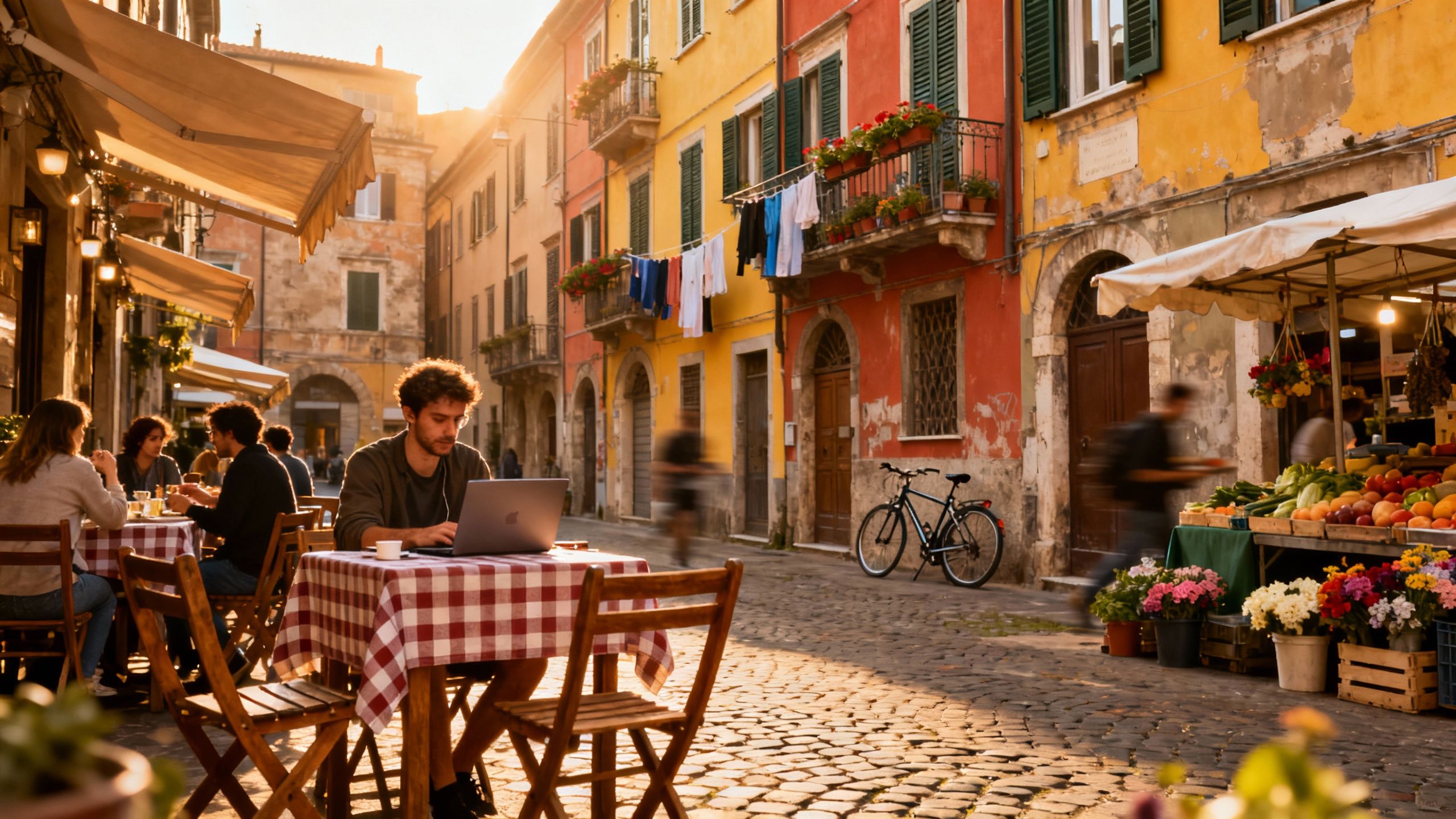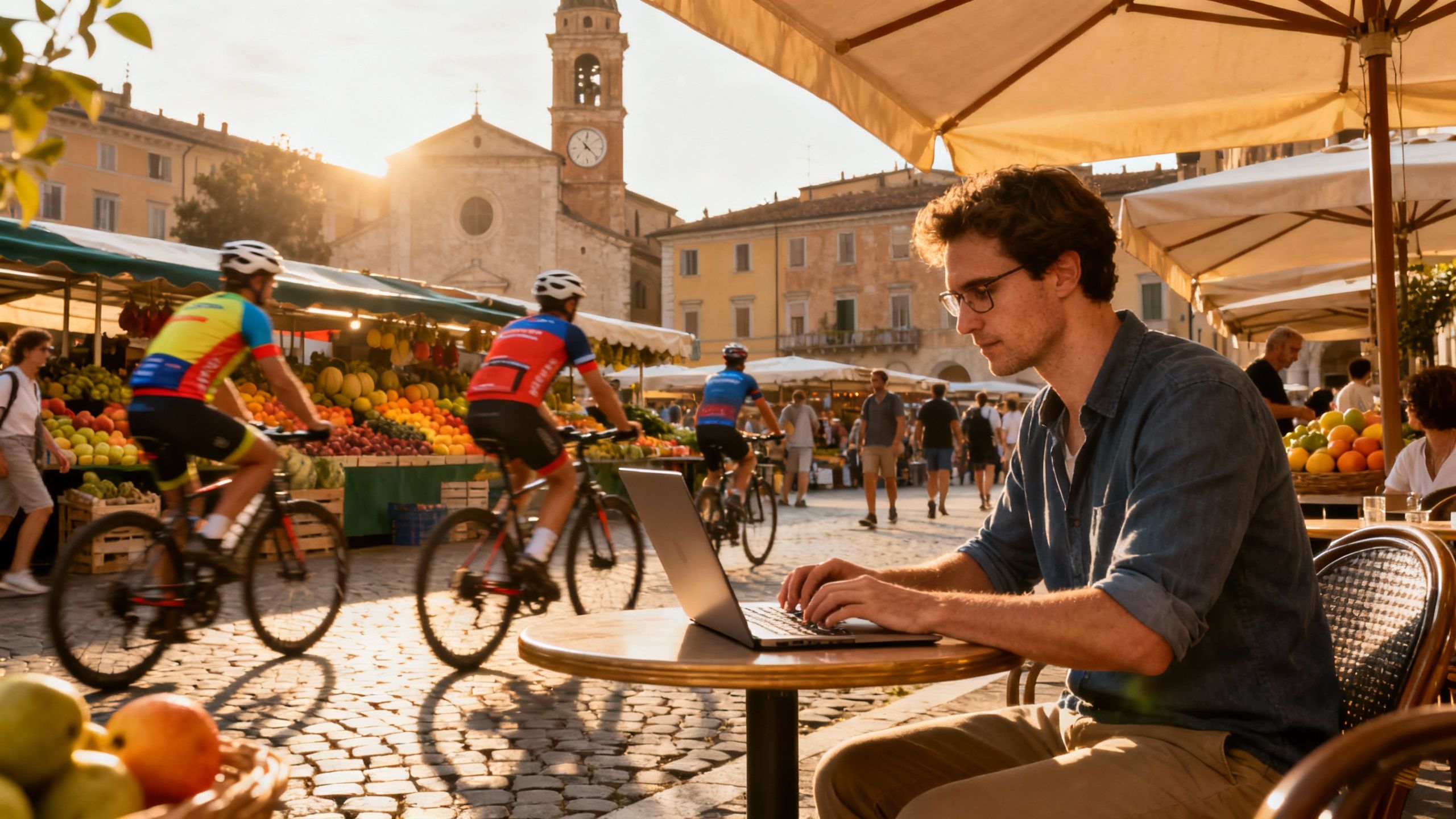Harvest-Time House‑Hunt: Italy's Autumn Advantage
House‑hunting in Italy’s autumn often uncovers quieter inventory, negotiable prices and clearer lifestyle signals — pair harvest‑time visits with local data and tax checks.
Imagine an October morning in Tuscany: street markets fragrant with porcini and clementines, a barista who already knows your name, and golden light on stone rooftops. That calm, harvest-time rhythm is when Italy feels most livable — and it’s exactly when smart buyers quietly find better deals.
Living the Italy lifestyle (and why season matters)

Life in Italy is tactile: espresso at 9am, a long pausa for family lunch, aperitivo by the piazza. These daily rhythms shape what you need from a home — compact kitchens for leisurely cooking, balconies for late sun, and a fast café that doubles as your early-morning coworking spot. Recent national data show house-price movement varies by season and region, so timing isn’t just romantic — it’s financial. (See ISTAT for quarterly trends.)
City pulse vs countryside calm: Milan, Rome, Puglia
Milan hums with coworking floors and espresso-fueled speed; Rome folds history into everyday life; Puglia offers olive-grove quiet and seaside tempo. Each has a season where life — and real estate activity — feels right. In cities, spring listings flood the market; in rural regions, autumn and winter can reveal hidden bargains when owners rethink use or rentals slow down.
Food, festivals and seasonal markets shape neighborhood personalities. From Palermo’s Vucciria market to Florence’s Oltrarno artisans, local rhythms determine rental demand, tourist spikes and the best months to inspect properties — and hosting rules have changed recently, affecting short‑term rental returns. (See platform tax and withholding updates.)
- Lifestyle highlights to scout on visits:
- Taste the morning market (Campo de' Fiori, Rome) to judge produce access and neighborhood noise.
- Sit in cafés on a weekday — if locals linger, it’s community; if tourists dominate, expect seasonal flux.
- Walk your proposed commute at peak and off-peak times to feel real traffic and transit service.
Making the move: practical playbook for the harvest season

If you want Italy’s lifestyle with smarter economics, consider house-hunting in October–November. Tourist demand eases, agents have fresher inventory, and owners tired from a busy summer are more open to negotiation. But policy shifts — for example recent moves on short‑term rental taxation and platform withholding — change the math for buy-to-let strategies, so factor tax changes into yield estimates.
Property styles and how they fit nomad life
Historic centro apartments deliver atmosphere — think wood beams and narrow streets — but check natural light, wiring and wifi. New builds and renovated farmhouses offer outdoor space and better work setups (dedicated rooms, fiber lines). Match the property to your work pattern: if you need quiet daytime hours, prioritize courtyard-facing units or homes with terraces rather than busy street-front windows.
Work with agents who speak lifestyle
Choose agencies that understand digital nomads: ask about fiber availability, nearby coworking (or quiet cafés), and seasonal rental performance. Local agents also know cultural quirks — for example, how condominiums handle renovations or noise — and they can flag properties whose purchase timing lines up with regional market cycles reflected in ISTAT data.
- Practical steps to buy in harvest season:
- 1) Visit in-person in October to feel daily life and test connectivity.
- 2) Ask agents for post-summer inventory and any winter reductions in asking price.
- 3) Get a fibre/wifi check and amortize renovation costs into your offer if needed.
Insider knowledge: expat truths and seasonal red flags
Expats often romanticize summer in Italy. But summer is noisy, crowded and expensive. Locals buy and sell most thoughtfully in spring and autumn. Listen to homeowners: if they mention tourist-season pressure or platform-driven renting, dig into local ordinances and tax changes that affect returns.
Cultural cues that change where you buy
In many towns the piazza is the real living room — proximity to it means social life but also weekend noise. Observe when shutters close: villages can be lively at dusk and quiet mid-afternoon. Learn local rhythms and buy for how you want to live, not how you vacation.
Red flags to research before you bid: inconsistent cadastral records, unclear condominium rules for short‑term rentals, and rules around tourist taxes or platform withholding. Platforms now withhold and remit taxes in many Italian municipalities, changing net rental yields — check host rules and local town hall requirements.
- Common expat wish-list vs reality:
- Want rural calm but get seasonal isolation; confirm healthcare and grocery access off-season.
- Love historic charm but face renovation and wiring costs; budget realistically.
Long-term lifestyle: how life changes after year one
After 12 months your calendar will pivot from sightseeing to routines: market days, local clubs, and a preferred bar for remote work. Property needs will shift too — storage for seasonal gear, insulation for winter, or a compact office nook. Plan your purchase with year-round living in mind, not just the honeymoon months.
Conclusion: Fall in love with Italy — then buy like someone who lives here. Use autumn visits to sense real neighborhood life, negotiate from a position of market-season insight, and work with agents who map lifestyle to logistics (fiber, permits, rental rules). When you pair seasonal patience with local expertise, you get both la dolce vita and a smarter purchase.
Danish investor and relocation advisor focusing on Portugal and the Algarve; loves coworking culture and expat networks.


